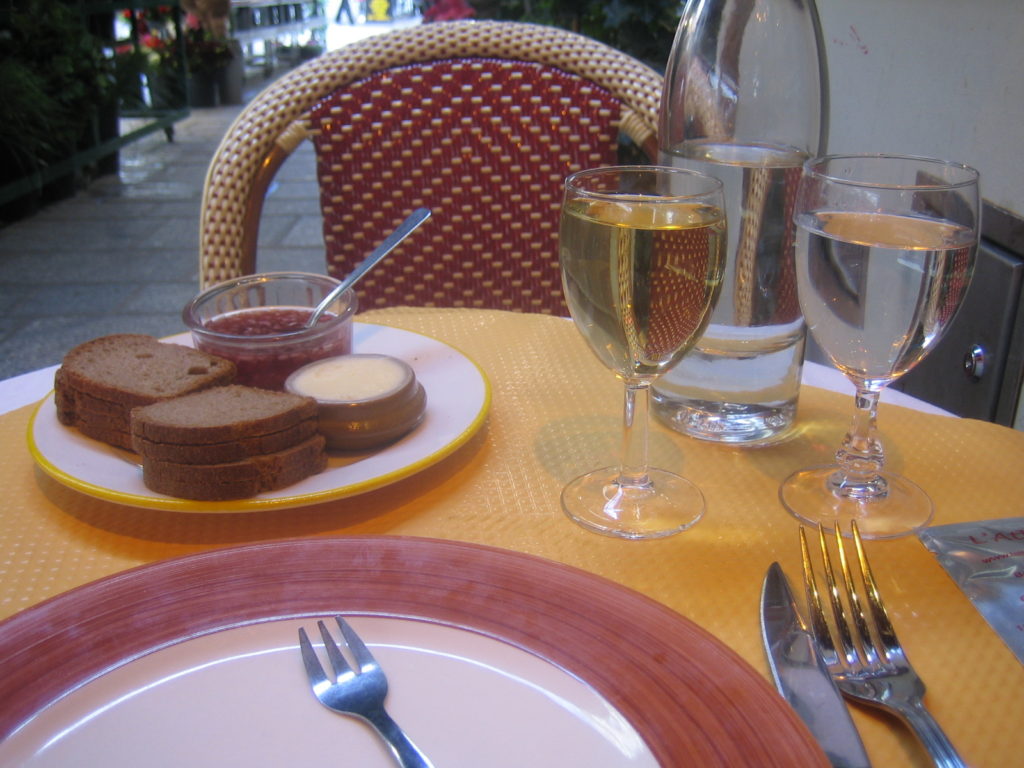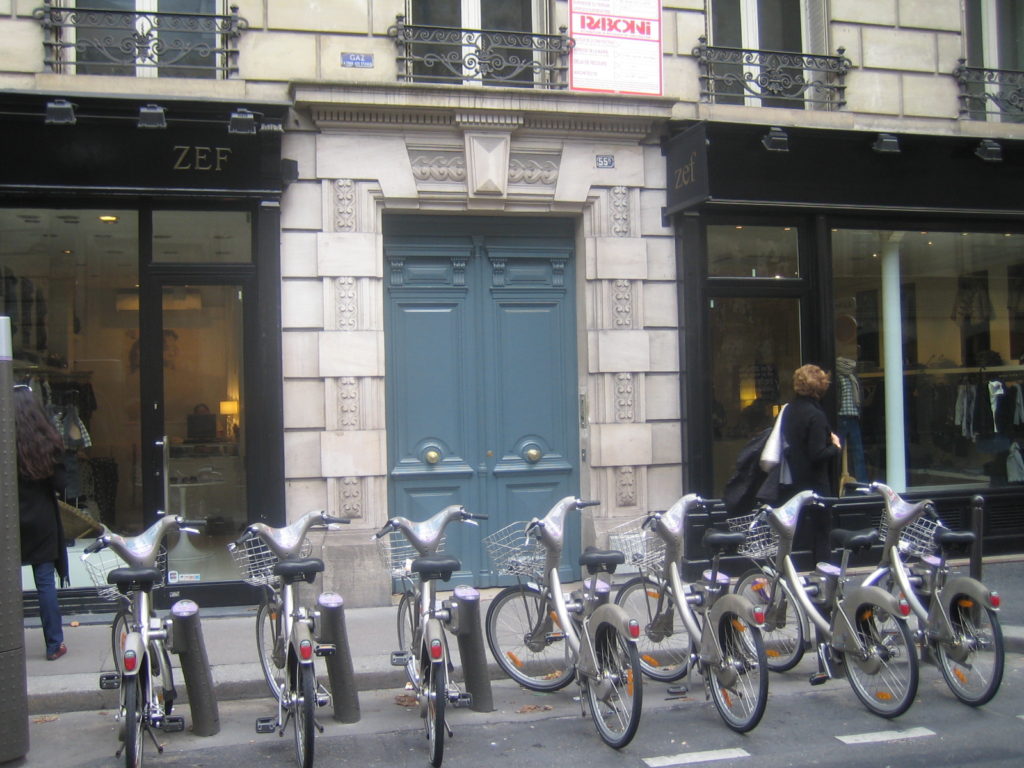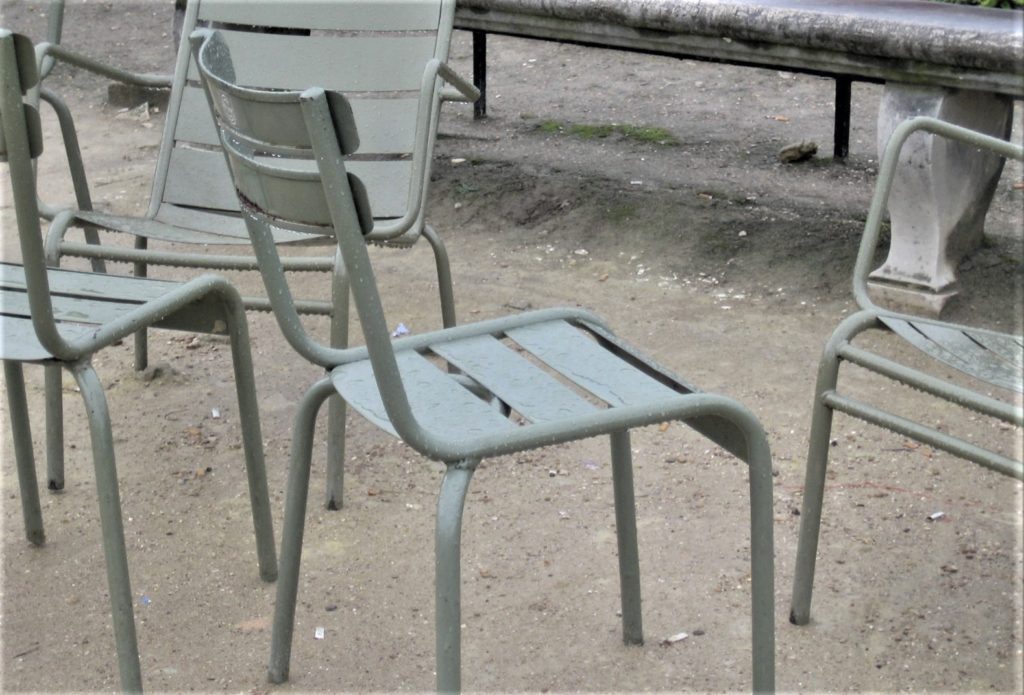Arriving in Paris during this summer’s series of excessive heat waves, I’m already certain that climate change will be a central theme of this vacation. Thanks to “la canicule” in France, daily temperatures are breaking records across the country (upwards of 40 C, which is 104 F), not only in the arid hotter regions of Provence and Southwest France along the Mediterranean Sea and Atlantic Ocean but in regions traditionally refreshing in summer, such as Brittany, Normandy and the Loire Valley. Wild fires are scorching southern and western areas, where August vacationers see billowing clouds of smoke from the Atlantic beaches and inland recreational parks. Rivers and streams are lower, inhibiting some recreational boating, and many communities are enforcing water restrictions. In Corsica, a popular French vacation destination, a violent out-of-the-blue tempest killed several vacationers in mid-August. The Mediterranean Sea, habitat for delicious fish, is warming fast and on its shores, faster than the rest of the world.
Climate change is dominating the headlines all over Europe. France’s Le Monde newspaper sums it up in a weekend “above the fold” front page series of articles – “Climate crisis – the summer that ended indifference.” The verbs and nouns are strong – “ravages.” Photos stark – billowing black smoke in Brittany. The climate crisis is one of the factors resulting in disappearance of Dijon mustard from the shelves. My colleague, journalist Mort Rosenblum, writes presciently of the “heat apocalypse” and the impact of prolonged drought on his acreage of olive trees in Provence. “A lightning bolt, sun amplified by broken glass, sparks from a weed-whacker or some fool’s cigarette butt is all it takes,” he notes in his newsletter. It sounds to me like late summer in California, where I gained this frightening understanding over 20 years.
In chic Paris, encountering dry desert-like air, I quickly note that the dress code is” wear as little as possible” for the French and everyone else – short shorts on both sexes, tanks and halter tops, breezy sundresses for women and girls. Since 2007, Paris has been aggressively addressing climate change through a series of plans with ambitious measures – including planting more trees, increasing alternative energy (such as solar panels) and converting concrete to gardens. By 2050, Paris seeks to reduce local emissions by 100%, promote an 80% reduction in the carbon footprint of Paris compared to 2004 levels and involve all local stakeholders in offsetting residual emissions in order to achieve the zero net carbon target for the Paris area. I find refuge in the interior shade of the nearest fresh oyster bar across the Seine River along Rue de Bac.
In the U.S., while European and Artic glaciers are melting 20 years ahead of original “worst case scenarios,” our paralyzed leadership can barely enact a comprehensive climate bill because of spineless partisan myopia and politicians obsessed with the next election instead of governing. California and the Northwest have been burning for years, sea levels are rising on both coasts and tornadoes are ripping through paths previously unheard off across the country. Even the mini-earthquakes are rumbling more frequently in North Carolina. We suffered miserably in the Southeast U.S. this summer with soaring combos of heat and humidity, and in the Northeast, we used AC for the first time after many July vacations with cool summer evenings (relatively speaking). Yet, sometimes you have to go abroad to see what’s in your own backyard. Maybe our politicians should too (but on their own dime, please).
Fortunately today in Paris I am able to venture out, in short doses, thanks to its longstanding esthetic of beauty, as seen in liberally planted trees, numerous public gardens with pools and welcoming chairs and colonnades on old buildings designed to offer shade and protection in bad weather. Happily, I had the wisdom to book hotels with air conditioning, although not all AC in France is equal, I quickly learned.
Navigating the heat takes much energy from the physical body and fries the brain; one is constantly battling the discomfort. After a midday water break at my nearby hotel, and a electrolyte-laced drink, I made my way along the shady side of the “luxe” high-fashion storefronts along Rue du Faubourg St-Honoré on the Right Bank and around the British, French and American embassies, huddled together with heavy tree canopy on expansive acreage just off the Place de la Concorde. On this trendy street, there weren’t many people window shopping today, that’s for sure.
I was struck by the degree of stress suffered by the horse-chestnut and linden trees, their leaves edged in brown from heat and drought; you would have thought fall was in the air, two months early. Climbing up the steps back to the Tuileries Gardens to wind through shady cover past the Jeu de Paume back to my hotel, I looked over my shoulder to glimpse the Eiffel Tower. From this sheltered strip under the lindens, where people were slumping in repose or chatting in metal chairs, I decided this was probably the best experience of the Eiffel Tower today!
Before my two weeks is over, as I am writing this section now retrospectively, I will have witnessed more of the canicule, the drought and the proactive actions underway in France:
- On the train to Limoges, we pass through wind turbine farms south of Paris (l’énergie éolienne), reminding me of the drive to Palm Springs from Los Angeles. Descending across the English Channel to Paris at the start of my trip one early morning, I was struck by the large mass of wind turbines off the British coast.
- Throughout central and central southwest France, the sunflowers are drooping – hectares and hectares of them. They are sad, dowdy and colorless when they should be vibrant and seem to want to hide from the sun that gives them their name. Will there be any sunflowers in the markets?
- During the canicule, as France roasts, the air feels violent – violent heat, violent wind, violent fires and T-storms. Near Limoges in our farmhouse with 15-inch-thick stone walls, I was startled awake in the middle of the night when the shutters in my bedroom slammed violently shut. Once again the weather was changing dramatically, fortunately this time to more temperate days. Half-awake, though, I was transported to the scene in the film Chocolat when the Mistral ripped through the village where Juliette Binoche struggled to protect her young child. It was so eerie I felt that someone had flown into the room on the wind, with a message: “The end of indifference,” bien sûr! Pay attention, get involved, do something even small, like planting a tree in your yard, as there is no time to waste.




